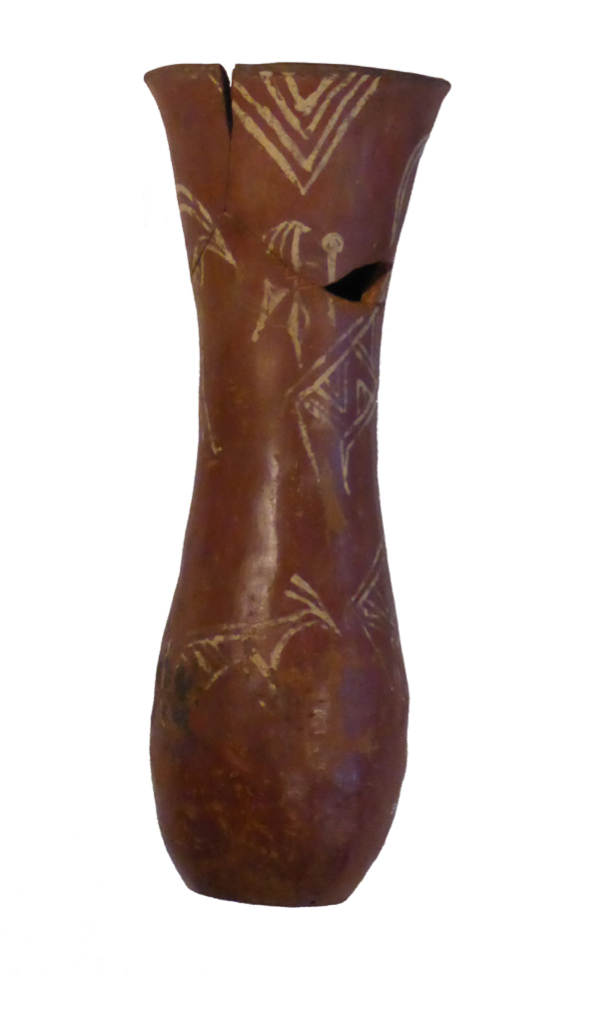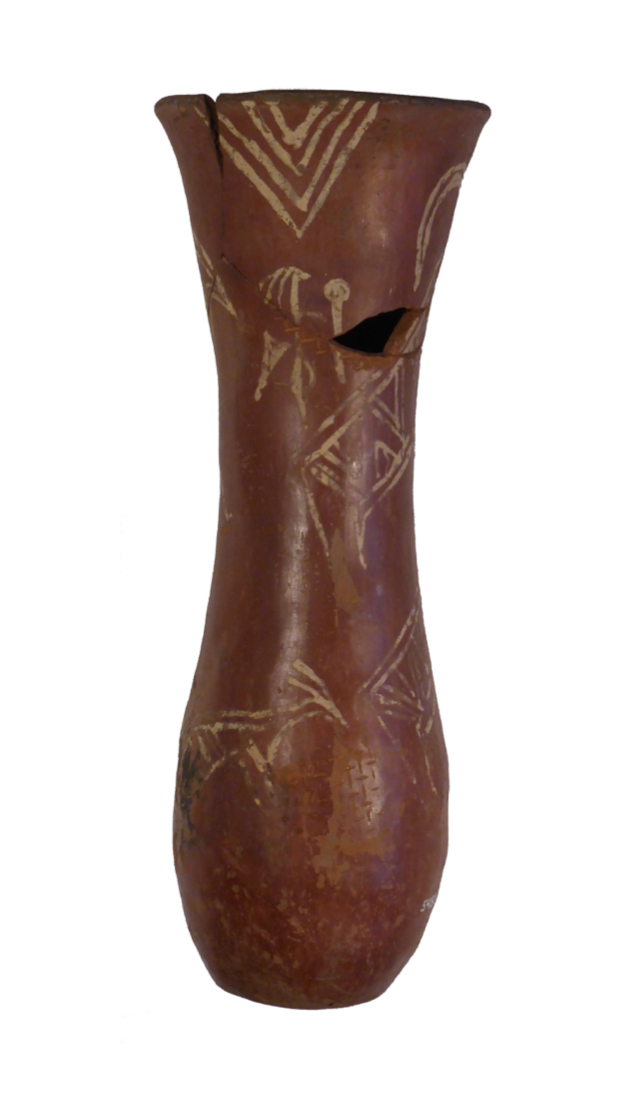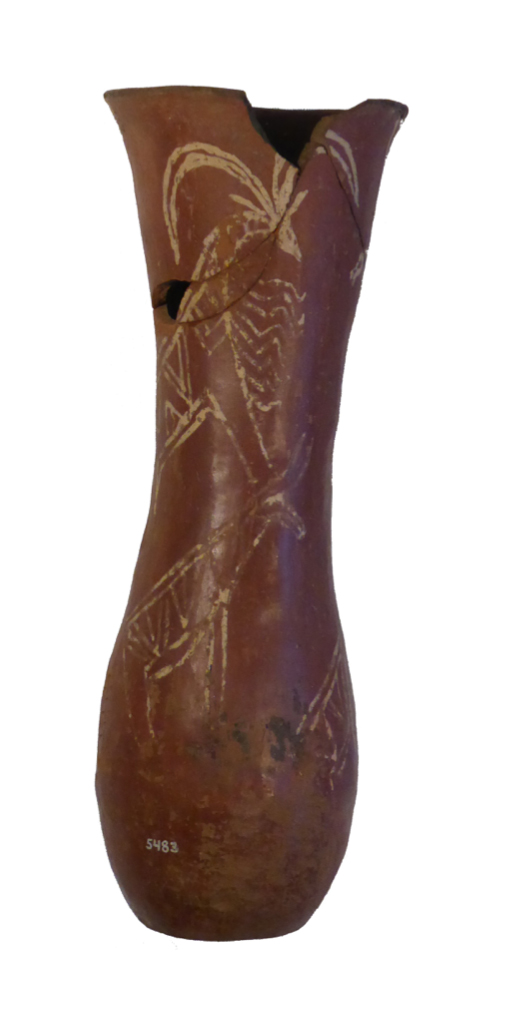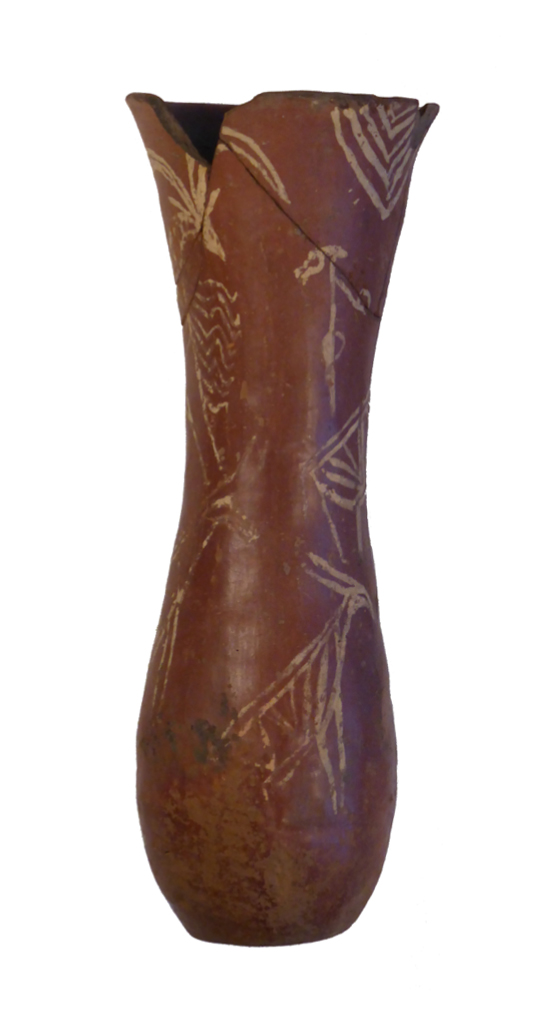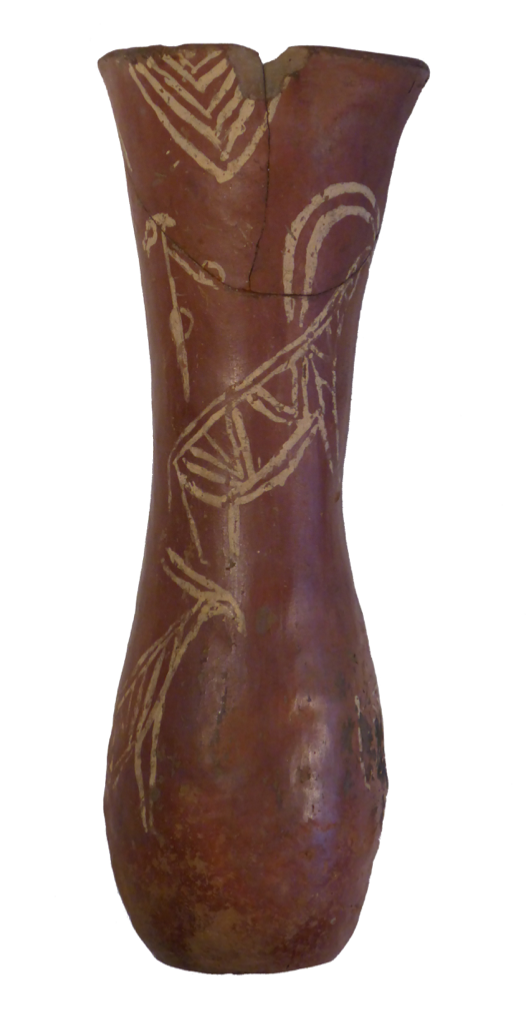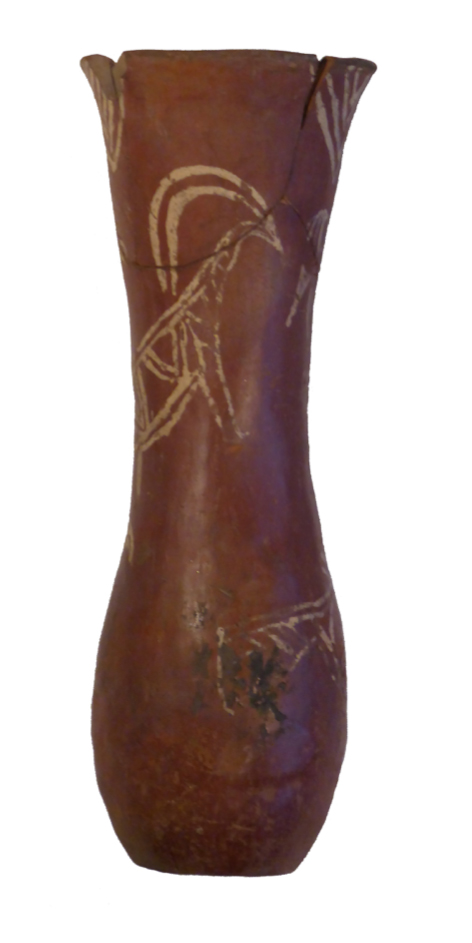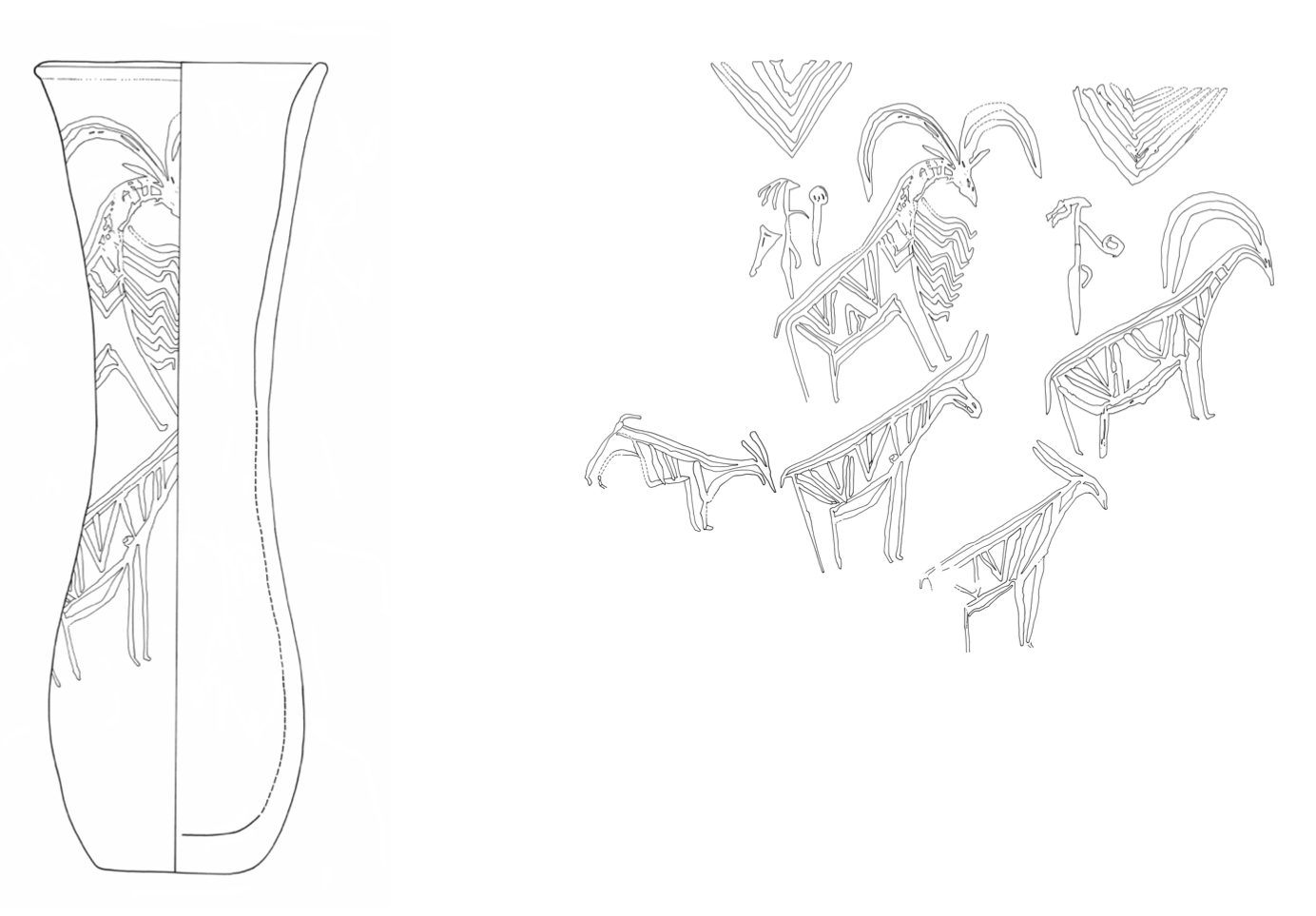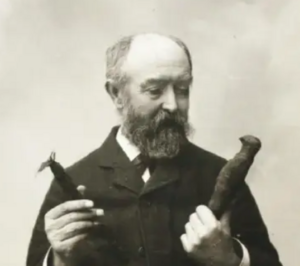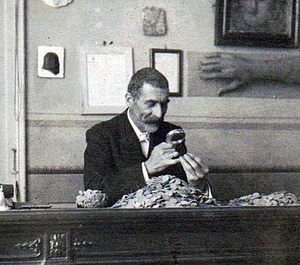C-Ware – bottle, short narrow neck C-0388
By Droux, Xavier
Archaeological site unknown.
October – November 1903 : Bought by Valdemar Schmidt from Giovanni Dattàri, Cairo.Copenhagen, Nationalmuseet, 5483.
Date : Naqada IA–IIB
General range of C-ware production
Material : Nile silt (Painted)
Preservation : Almost complete
Decoration preservation : Good
Preservation information :
Small sherds missing at rim and on body.
Description
Near the bottom of the bottle, an area is punctured with a series of small incisions, apparently done prior to the firing of the vessel.
Decoration
Two scenes mirror each other on opposite sides of the bottle. On one side, a Barbary sheep is represented followed by a man shown in small size above its back. The animal has long, diverging, crescent-shaped horns, and a long chest mane represented by a series of undulating lines. The man has long hair and possibly a penis sheath. He holds a mace with a pear-shaped head in one hand. A triangular shape painted behind him may representing a knife or another weapon. On the other side of the vessel, an ibex is shown with a man standing above its back. The ibex has long horns curving backward. The man is very similar to the one on the other side, although he does not appear to hold any weapon. On the lower part of the vessel, three further animals are depicted. Below the Barbary sheep, a gazelle has short horns pointing toward the front and curving backward. Another gazelle in front of it has short straight horns pointing backward. To the left, a dog is represented chasing the gazelles. All the animals have their bodies filled in with chevron designs and, as the men, face right. The rim is painted with a white line, and two downturned triangles are filled with chevrons.
Dimensions (cm)
30.8
11.4
11.4
Base diameter: 6.0; Widest body diameter: 9.7
Additional information
Closed
Vi 37
Oi 100
flat base
Outside
References
1924
Corpus Vasorum Antiquorum: Danemark. Copenhagen: Musée National I. Union Académique Internationale. Paris
, pl. 7,9–10.1948
A predynastic ostrich egg with incised decoration. Journal of Near Eastern Studies 7
, 49, fig. 3D.2015
Riverine and desert animals in predynastic Upper Egypt: material culture and faunal remains. Dphil thesis, University of Oxford. Oxford
, cat. 1.59.2018
Hunting for power: an exceptional white cross-lined jar in the National Museum of Denmark. Mitteilungen des Deutschen Archäologischen Instituts, Abteilung Kairo 74
.2019
Le taureau à l’époque prédynastique et son importance pour le développement de l’iconographie royale – avec un excursus sur l’origine du sceptre héqa, in: Aufrère, Sydney (ed.), Les taureaux de l’Égypte ancienne. Publication éditée à l’occasion de la 14e Rencontre d’égyptologie de Nîmes. Égyptonimes 2
, 41–42.2021
Chiefs, bound captives, and harpooned hippopotamuses: an exceptional unpublished C-ware vessel in the Royal Ontario Museum, Toronto (inv. 900.2.13). Archéo-Nil 31
, 48, table 2, no. 17.2021
Found in a cellar, but from Naqada? A new predynastic hunting scene on a C-ware fragment from the Garstang Museum of Archaeology, Liverpool, in: Claes, Wouter; De Meyer, Marleen; Eyckerman, Merel; Huyge, Derek † (eds), Remove the pyramid! Studies on the archaeology and history of predynastic and pharaonic Egypt in honour of Stan Hendrickx. Orientalia Lovaniensia Analecta 305. Leuven
, 394, table 1.